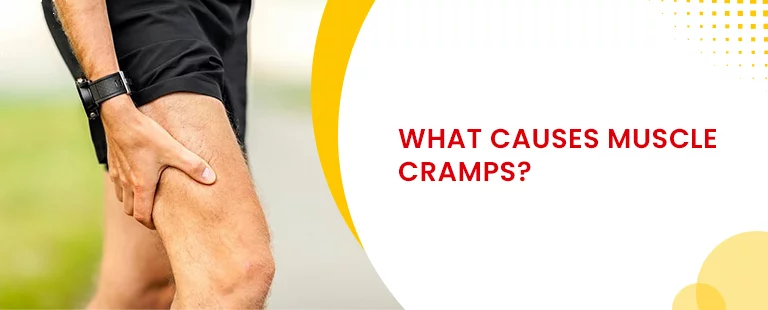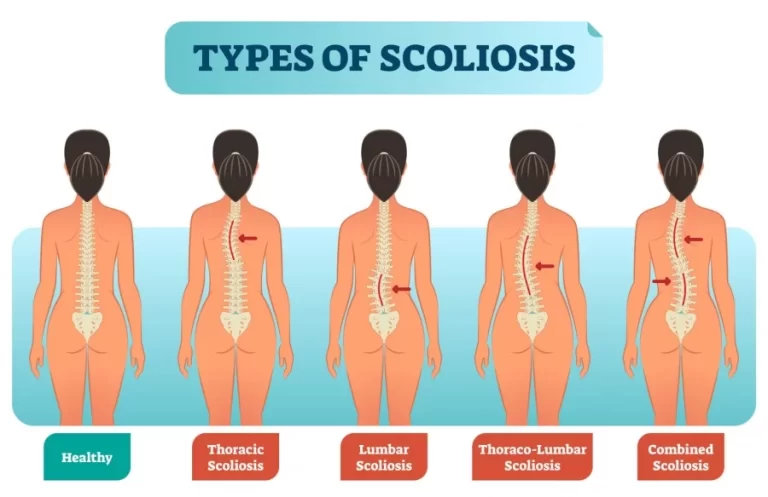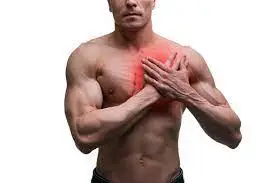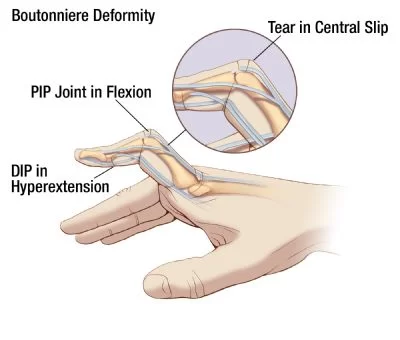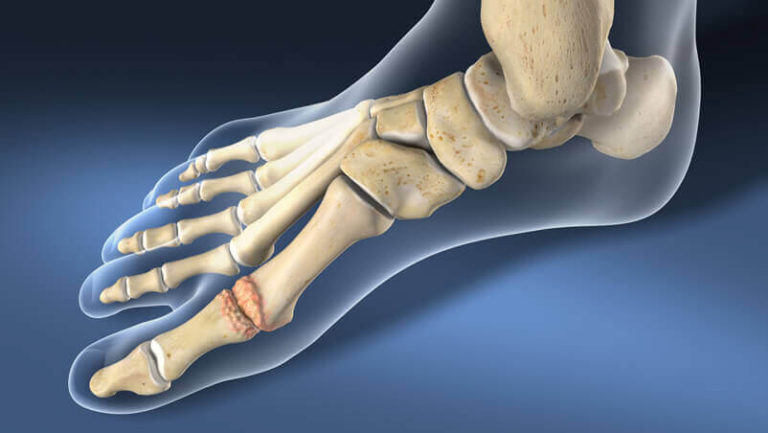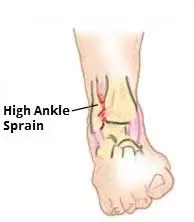Why Do I Get Muscle Cramps?
Introduction
Muscle cramps are sudden, involuntary muscle contractions (spasms) in one or a group of your muscles. They can be caused by various factors, including dehydration, muscle fatigue, poor blood circulation, electrolyte imbalances (such as low levels of potassium, calcium, or magnesium), or certain medications.
Cramps can also occur during exercise, particularly if the muscles are overused or not adequately warmed up. Additionally, underlying health conditions such as nerve compression, thyroid disorders, or inadequate blood supply to the legs can contribute to muscle cramps.
Understanding the root cause of your muscle cramps is crucial for effective prevention and management.
The exact reason is unknown, but some of the risk elements may contain poor physical condition, dehydration, and muscle fatigue. You can help relieve the duration and severity of cramps by gently stretching the muscle and rubbing the area.
What are Muscle Cramps?
Muscle cramps can happen in any muscle; cramps of the leg muscles and feet are particularly expected. An involuntary, forcibly constricted muscle that does not relax is called a cramp. As we move our limbs, the muscles that are freely regulated—like those in our arms and legs—contract and relax alternately.
To maintain our posture, the muscles that support our head, neck, and trunk flex in coordination. Involuntarily, or without conscious choice, a muscle (or even a few muscular fibers) contracts is known as a “spasm.” A severe, prolonged spasm transforms into a cramp. A significant or palpable stiffening of the affected muscle is frequently the result of muscle spasms.
The duration of a muscle cramp can range from a few seconds to thirty minutes, and in rare cases, much longer. It is fairly unusual for a cramp to repeatedly flare up until it goes away. A muscle cramp can affect a single muscle, the complete muscle, or a group of muscles that work together, such as the muscles that flex nearby fingers. Certain cramps cause muscles that normally move body parts in opposite directions to contract simultaneously.
Muscle cramps are highly common. Approximately 95% of people have had a cramp at some point in their lives. Adults frequently suffer from muscle cramps, which worsen with age. However, children get cramps in their muscles too. Any skeletal muscle that we may consciously contract has a risk of cramp.
Extremity cramps are extremely frequent, with the legs and foot (including nocturnal leg cramps) and the calf being the most commonly impacted. Moreover, cramps can occur in the involuntary muscles of the uterus, blood vessel wall, bowels, bile, urine passageways, bronchial tree, etc. Involuntary muscular cramps won’t be covered in more detail in this review.
Which forms of muscular cramps happen, and why do they occur?
- “True” cramps
- Tetany
- Contractures
- Dystonic cramps
Cramps are classified according to their different reasons and the muscle masses they simulate.
True cramps
True cramps apply part or all of a single muscle or a group of muscles that typically act together, such as the muscles that flex several adjacent fingers or the leg muscles.
- Most references agree that true cramps are induced by hyperexcitability of the nerves that prompt the muscles.
- They are by far the most prevalent kind of cramps in the skeletal muscles.
- There are several circumstances in which one may experience true cramps.
Other true cramps contain:
- Injury: Constant muscle spasms may happen as a protective means following damage, such as a broken bone. In this example, the spasm tends to reduce movement and stabilize the area of injury. A muscular spasm can result from a single injury to the muscle.
- Vigorous activity: True cramps are typically associated with the vigorous help of muscles and muscle fatigue (in sports or with unaccustomed movements). These cramps may occur during the action or, in some cases, several hours afterwards. Also, muscle fatigue from sitting or lying for a prolonged period in an awkward position or any repetitious use can generate cramps. Older adults are at chance for cramps when conducting active or strenuous physical exercises.
- Rest cramps: Cramps at rest are very typical, particularly in older adults, but may be experienced at any age, including childhood. Rest muscle cramps usually happen at night. Night cramps, also called nocturnal cramps, are rarely life-threatening, but they can be uncomfortable, interfere with sleep, and reoccur often, meaning they may happen many times a night or several times a week. It is unknown what exactly causes nocturnal cramps. Such cramps can occasionally be brought on by performing a motion that shortens the muscle. An illustration would be pointing the toe downward while in bed, which shortens the leg’s calf muscle, a common location for cramping muscles.
- Dehydration: Sports and other activities that are physically demanding, such as those carried out by endurance athletes, can result in substantial fluid loss through sweating. True cramps are more likely to occur when there is this kind of dehydration. These cramps can be an early warning sign of heatstroke and are more likely to happen in warm temperatures. Both chronic volume loss of bodily fluids from diuretics (drugs that increase urination) and inadequate fluid intake cause dehydration and may work in a similar way to increase the risk of cramping, particularly in the elderly. Cramps have also been linked to sodium deficiency. Dehydration typically results in the loss of sodium, the most prevalent chemical component of bodily fluids outside of cells.
- Body fluid shifts: There are other disorders where there is an abnormal distribution of bodily fluids that can also cause true cramps. An example is liver cirrhosis, which causes ascites, or an accumulation of fluid in the abdominal cavity. Similar to this, cramps are a quite common side effect of the quick changes in bodily fluid that happen when receiving dialysis for renal failure.
- Low blood calcium or magnesium: The excitability of both the nerve endings and the muscles they activate is directly increased by low blood levels of either calcium or magnesium. Both the muscle cramps that are frequently reported during pregnancy and the spontaneous genuine cramps that many older persons suffer may be predisposed by this. If these minerals are not taken as supplements through the food, low levels of calcium and magnesium are frequent in pregnant women.
- Any condition that reduces the availability of calcium or magnesium in bodily fluids can cause cramps. These conditions include taking diuretics, hyperventilating (breathing too much), vomiting excessively, eating too little calcium or magnesium, not getting enough calcium absorbed from the diet because of a vitamin D deficiency, having problems with the parathyroid glands (tiny glands in the neck that control calcium balance), and others.
- Low potassium: Muscle cramps can infrequently result from low blood potassium levels, but muscle weakness is more frequently linked to low potassium.
Tetany
All of the body’s nerve cells become active during tetany, which causes the muscles to become stimulated. The entire body twitches or cramps as a result of this reaction. The way the tetanus toxin affects nerves is where the name “tetany” originates. The term is now, nevertheless, frequently used to describe muscle cramps caused by various illnesses, such as low blood levels of magnesium and calcium.
Tetanic cramps can also be caused by low calcium and low magnesium, which raise nonspecific nerve tissue activity. In addition to muscle activation, these cramps frequently show signs of hyperactivity in other neuronal activities. For example, low blood calcium can result in tingling and numbness around the mouth and other places, as well as spasms in the hands and wrist muscles.
Tetanic cramps can occasionally be barely distinguishable from real cramps. Because the cramping discomfort obscures or distracts from the accompanying changes in sensation or other nerve functions associated with tetany, these changes may not be noticeable.
Dystonic cramps
Dystonic cramps are the last type when the contraction of muscles that are not required for the desired movement is triggered. This kind of cramping affects muscles that usually contract in the opposite direction of the desired movement and/or muscles that amplify the movement. Certain dystonic cramps typically impact specific muscular groups, such as the eyes, jaws, neck, throat, etc.
When performing repetitive tasks like handwriting (writer’s cramp), typing, playing specific musical instruments, and many more, the hands and arms may be impacted. True cramps resulting from muscle fatigue can also be caused by any of these repetitive actions. Compared to actual cramps, dystonic cramps are less frequent.
Contracture cramps
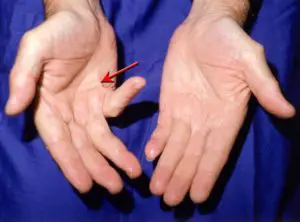
A contracture is an illness that may simulate a muscle cramp.
A contracture is an injury to the soft tissues that is typically caused by muscle action. Whether the corresponding muscle is contracted or not, the affected tissue cannot move entirely when there is a contracture. This is a result of the damaged tissue’s inability to react to muscular movements. This results in the loss of the entire range of motion in a fixed bodily part. The tendons that often force the fingers to close when gripping are affected by the most prevalent kind of contracture, which affects the palm. Usually, this type of contracture affects the ring finger. Dupuytren’s contracture of the hand is the name given to this condition.
Do all muscle cramps fall under the categories mentioned above?
No. Not all cramps are readily classified in a preceding manner since these categories best apply to cramps that make up an individual’s major muscle problem. Many cramps are a fairly minor part of nerve and muscle diseases; other muscle symptoms are usually more common in these diseases.
Some examples include:
- Amyotrophic lateral sclerosis (Lou Gehrig’s disease) with deficiency and muscle wasting
- Radiculopathy (spinal nerve irritation or squeeze from various causes) with pain.
- Warping or loss of sensation, and/or weakness
- diseases of the peripheral nerves that cause weakening distorted and reduced feeling, such as diabetic neuropathy
- Several are mostly dystonic muscle disorders.
Conditions that may cause cramps include:
- Alcohol misuse
- cirrhosis
- chronic kidney failure
- Hemodialysis
- cancer treatment
- Muscle fatigue
- vascular disease
- Parkinson’s disease
- peripheral artery disease (PAD)
- restless legs syndrome
- pregnancy, especially in the later stages
- motor neuron disease
- Lou Gehrig’s illness (amyotrophic lateral sclerosis)
- spinal nerve irritation or compression
- hardening of the arteries
- spinal stenosis
- thyroid disease and hormonal problems
- chronic infections
- chronic obstructive pulmonary disease (COPD)
- chronic kidney disease and kidney failure
- diabetes, especially type 2 diabetes
- fibromyalgia
Medications that can activate cramping contain:
- Iron sucrose (Venofer)
- Conjugated estrogens
- Raloxifene (Evista)
- Naproxen (Aleve)
- Teriparatide (Forteo)
Treatment choices for muscle cramps
Most muscle cramps are relieved after a few seconds or minutes. There has been very little research done to work out which treatment works best, but therapy options include:
- Stretch and massage –Apply a light, prolonged stretch to the muscle causing the cramps, and then gently massage the affected area until the cramps stop. See your physiotherapist for guidance if you’re not sure how to stretch the muscles in your legs.
- Ice pack –An ice pack applied for a few minutes may help the muscle relax in cases of severe cramps.
- Medication –Certain drugs may be useful in managing cramping in the muscles. For more information, consult your physician.
- Further treatment –If you frequently get muscular cramps or if they persist for more than a few minutes, consult a doctor. You required Diagnosis
Prevention strategies
Tips on how to decrease the likelihood of muscle cramps include:
- Improve your level of physical fitness.
- Include regular stretching into your wellness routine.
- Warm up and cool down entirely whenever you exercise or play sports.
- It’s essential to drink water prior to, during, and following exercise.
- Make sure your diet is nutritionally acceptable and contains plenty of fruits and vegetables.
- A typical massage may help to relieve muscle tension.
- Wear correctly fitted shoes and avoid high heels.
FAQ
What are the five common reasons for muscle cramps?
Putting too much strain or use on a muscle.
Compression of your nerves due to conditions like pinched nerves in the back or neck or spinal cord injuries.
Hydration loss.
Low concentrations of electrolytes like calcium, magnesium, or potassium.
insufficient blood flow to your muscles.
Being pregnant.
Certain medications.
What deficiency results in cramping in the muscles?
The main causes of joint discomfort and cramping in the muscles are deficiencies in calcium and vitamin D. Each of us needs to be aware of the levels of vitamins in our bodies to adjust our diets, take supplements, and, most importantly, seek medical attention when necessary.
How can muscle spasms be prevented?
After carefully massaging the strained muscle, stretch it. When you get a calf cramp, bring the top of your constricted foot towards your face while maintaining a straight leg. Additionally, consider pressing down hard while standing with your weight on the leg that is cramped. This also relieves a thigh cramp in the back.
Why do muscle cramps happen at night?
In general, they most likely stem from worn-out muscles and nerve issues. Growing older raises the chance of experiencing leg cramps during the night. Pregnant women are also more likely to experience leg cramps at night. Leg cramps at night can be caused by disorders related to blood flow, diabetic nerve damage, and kidney failure.
Which drink helps leg cramps?
Because quinine relaxes muscles, it has been proposed as a possible treatment for leg cramps. The active component of tonic water is quinine. It is thought to assist in lessening the frequency and force of cramping-inducing muscular spasms.
Which diet products protect against cramping in the muscles?
Avocados. Rich in potassium and magnesium, avocados serve as a good source of electrolytes.
Coconut Juice.
Candy Potato. Sweet potatoes are tasty and high in vitamins!
Bone Soup. Bone broth combats muscle crams in several ways.
prawn.
Hydra melons.
Greek dairy.
Bananas.
Which three methods can you use to avoid muscle cramps?
Before working out, warm up your muscles gradually with active stretches.
Stretching statically both before and after the activity.
Consuming a lot of water.
Understanding when to choose a sports drink over water and whether you might be deficient in electrolytes.
References
- Department of Health & Human Services. (n.d.). Muscle cramp. Better Health Channel. https://www.betterhealth.vic.gov.au/health/conditionsandtreatments/muscle-cramp
- Muscle cramp – Symptoms and causes – Mayo Clinic. (2023, March 7). Mayo Clinic. https://www.mayoclinic.org/diseases-conditions/muscle-cramp/symptoms-causes/syc-20350820
- Can pickle juice help relieve a muscle cramp? (n.d.). https://www.houstonmethodist.org/blog/articles/2022/feb/muscle-cramps-8-things-that-cause-them-4-ways-to-stop-them/
- Kunakornsawat, S. (2023, July 21). Muscle cramps – causes and prevention. MedPark Hospital. https://www.medparkhospital.com/en-US/disease-and-treatment/muscle-cramps

